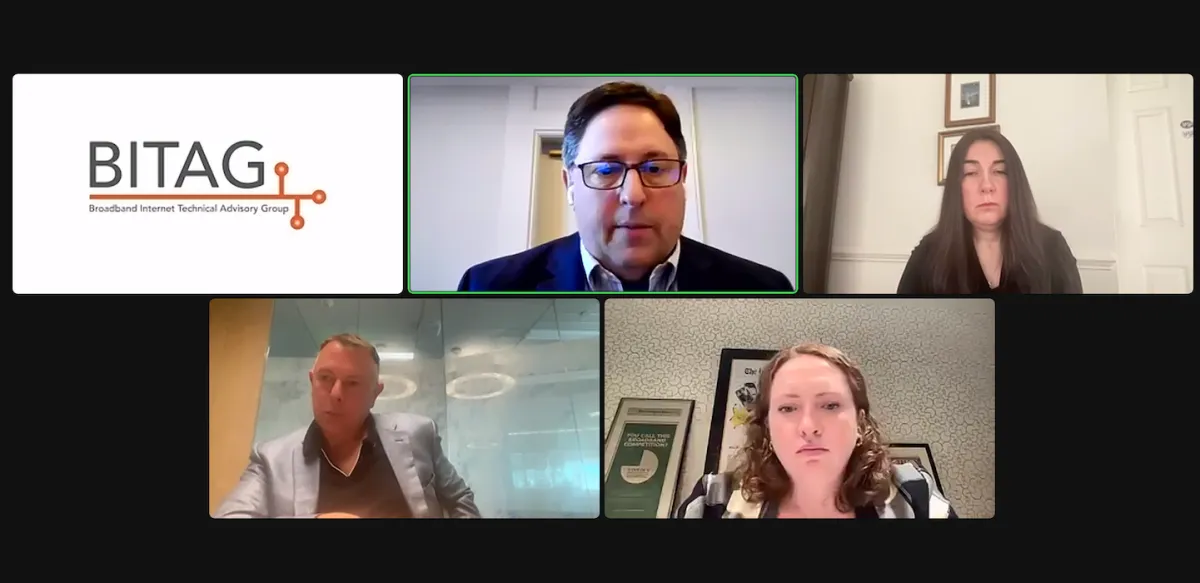BITAG Wants States to Consider Non-Fiber for BEAD
The nonprofit said broadband offices should consider cost and deployment time as well.
Jake Neenan

WASHINGTON, January 31, 2024 – Experts from the Broadband Internet Technical Advisory Group urged state broadband offices on Wednesday to consider a variety of technologies when awarding broadband grants.
It’s in part a reference to the Biden administration’s Broadband Equity, Access and Deployment program, which makes $42.5 billion available to states for expanding broadband infrastructure.
The program favors fiber-optic cable, only allowing states to consider other technologies when fiber becomes too costly.
“We are in no way saying that fiber isn’t great – it is,” said Douglas Sicker, CTO at the University of Colorado Denver and BITAG’s executive director. “It’s a wonderful broadband solution. It offers very high data rates, it offers very low latency, lots of characteristics that are very appreciable. However, it’s not the only technology.”
The nonprofit released a report last week arguing “there is not one ‘best’ technology,” and that factors like cost and deployment times are important to consider in addition to performance. The group hosted a webinar Wednesday on the report.
States will have more leeway to take cost into account when administering BEAD. Program rules allow them to set a high-cost threshold, the fiber cost-per-location at which states will consider putting BEAD dollars toward cheaper technologies like fixed wireless.
Most states are choosing to set those after receiving applications.
“Typically deploying wireless is going to cost less than deploying fiber in the short run,” said Matt Arson, CEO of broadband provider Vistabeam and an editor of the BITAG report. “However, over the long run, sometimes it makes more sense to deploy fiber instead of wireless because over the long term, fiber tends to be more scalable to higher speeds.”
Wireless broadband can also be deployed quicker, which panelists said can make sense for areas with little or no existing infrastructure. A wireless connection can bypass rights-of-way disputes on streets and railroads, which routinely hold up broadband deployments.
A bill aimed at preempting some local rights-of-way rules for broadband projects cleared House committees in October, and the Commerce Department, which manages BEAD, has stood up a team to streamline permitting with federal land use agencies ahead of projects breaking ground.
“You can’t build if you don’t have rights-of-way, and that can delay a build by six months to a year and a half, I’ve seen this,” Sicker said.
Sicker reiterated that in most cases, fiber is the most preferable technology, saying that every home and business getting connected with fiber “would be great, but it’s not practical.”
“I think it’s really important for [state broadband offices] to go out and get a really good understanding of the conditions throughout different areas of their state,” said Arson, adding that SBOs should “go out and talk to the end users” and “visit the providers” to get an idea of what peoples’ needs are and how grant programs might meet them.










Member discussion